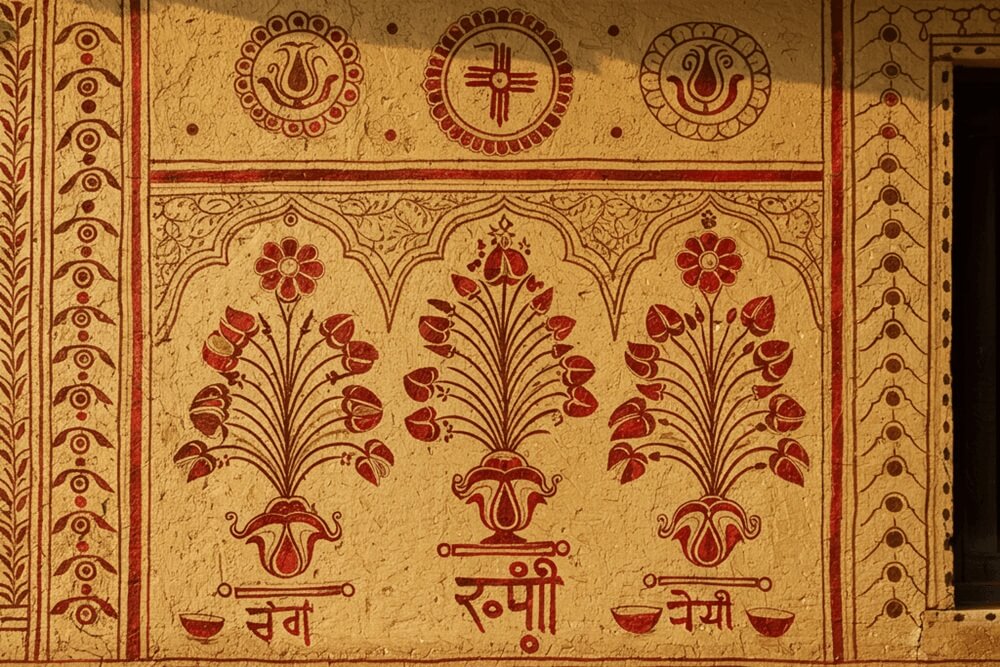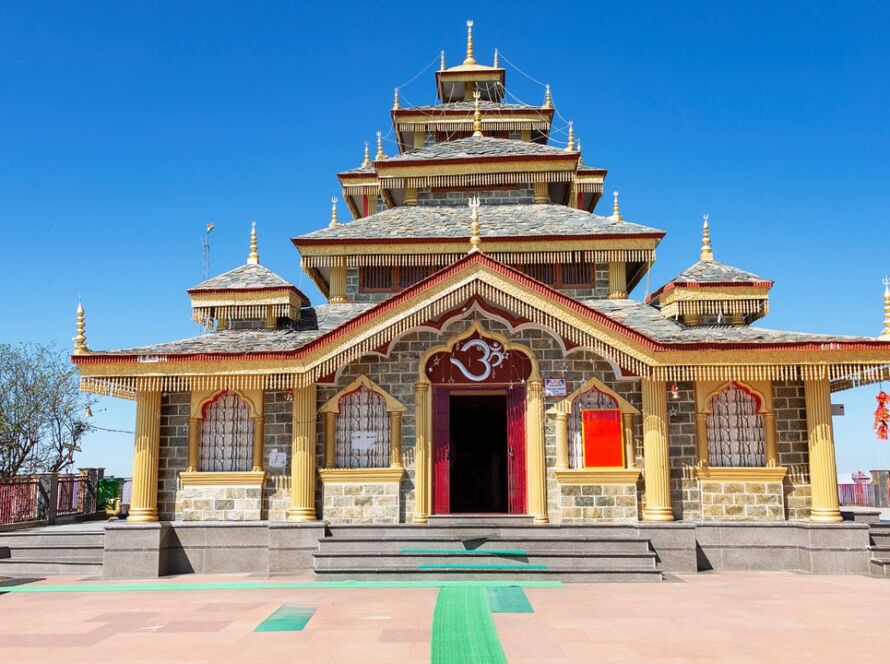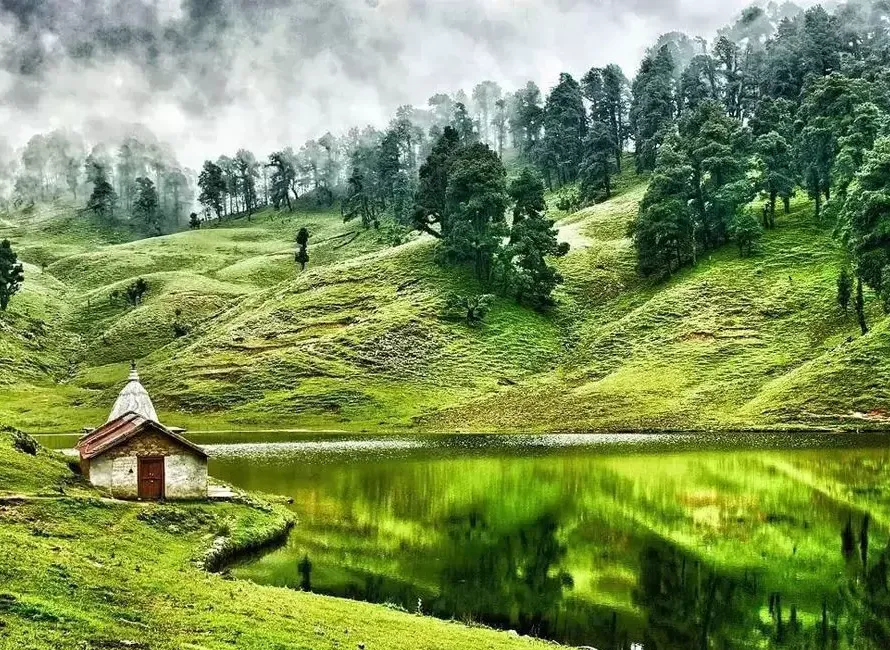If you’ve ever wandered through the villages of Kumaon in Uttarakhand, you may have seen floors and walls decorated with striking white designs on a deep red background. These are not ordinary decorations—they are Aipan Art, one of the most cherished forms of Uttarakhand folk art. This ritualistic painting style, created with rice paste on red ochre surfaces, has been practiced for centuries by women in the region.
Traditional Aipan art isn’t just about beauty. Each geometric line, floral motif, and dot carries cultural symbolism, often drawn during festivals, weddings, and sacred ceremonies to invoke prosperity and divine blessings. Today, Aipan has gained new relevance, with people adapting it to modern home décor, textiles, and even digital designs.
In this guide, we’ll explore the history of Aipan art, its materials and techniques, iconic patterns, cultural significance, and modern adaptations. You’ll also learn where to experience it in Kumaon and how to try Aipan art designs yourself.
History and Origins of Aipan Art
The roots of Aipan Art Uttarakhand go back to the Kumaon region, where it became an essential household tradition. The word “Aipan” is believed to derive from the Sanskrit “Lepna,” meaning plaster or coating, reflecting its application on freshly prepared red surfaces.
Traditionally, Aipan was created during auspicious occasions—from naming ceremonies to Diwali. Women of the family would prepare the floor or walls with geru (red ochre soil) and draw ritualistic patterns using rice paste (biswar). Each design held a spiritual purpose, whether it was a Swastik for good luck, Lakshmi chowki for prosperity, or footprints symbolizing deities entering the home.
This Aipan art history is also closely tied to women’s empowerment in Uttarakhand. Women preserved and passed down the skill through generations, ensuring that even today, villages in Almora, Pithoragarh, and Nainital proudly maintain the practice.
In recent years, revival programs led by NGOs and the Uttarakhand government have supported local artists by promoting Aipan art in Kumaon as both cultural heritage and livelihood. The art form is now recognized not only as a sacred household tradition but also as a valuable cultural identity of the hills.
Materials and Techniques in Aipan Art
Learning how to make Aipan art doesn’t require expensive tools. The process has remained simple and symbolic for centuries:
- Base Preparation: Surfaces such as floors, walls, or wooden planks are coated with geru (red ochre clay). The red background symbolizes energy and purity.
- Rice Paste (Biswar): A paste of rice flour mixed with water is used as the primary medium. The contrast of white on red creates the striking look unique to traditional Aipan art.
- Application Tools: Designs are often drawn by hand or with twigs and cotton balls. Skilled artists use their fingers to create perfect symmetry in the designs.
- Patterns and Motifs: Common Aipan art patterns include dots, intersecting lines, circles, and swastikas. Floral and peacock motifs are also widely used, symbolizing prosperity, nature, and continuity.
For beginners, it’s best to practice on paper before attempting large Aipan art designs on floors. Start with small motifs like the Swastik or Lakshmi chowki, then move on to more elaborate geometric patterns.
Today, many urban artists experiment with new materials—using acrylic paints on canvas or digital tools to recreate Aipan art patterns, making the art more accessible to younger generations.
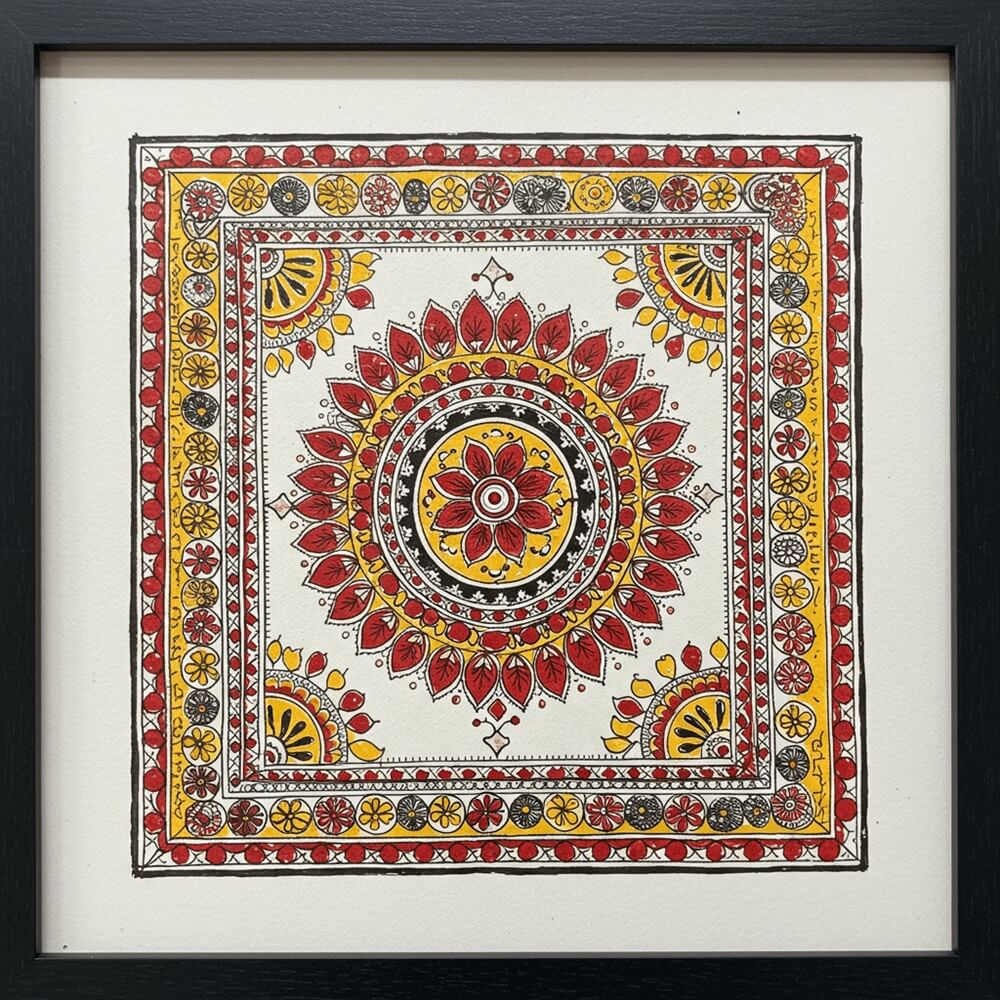
Designs and Motifs in Aipan Art
The beauty of Aipan art designs lies in their symbolism. Each motif has a purpose and meaning, often tied to life events and festivals in Kumaon:
- Chowkies: Square patterns drawn on floors during weddings and pujas, symbolizing divine presence.
- Swastik: Represents good luck and is one of the most common Aipan art patterns.
- Peacock Motifs: Inspired by nature, peacocks symbolize beauty and prosperity.
- Saraswati Chowki: Drawn during educational rituals, invoking the blessings of Goddess Saraswati.
- Laxmi Padchinh (Footprints): Tiny footprints symbolizing Goddess Lakshmi entering the home, especially during Diwali.
In the Kumaon region, every festival or occasion has its own variation of Aipan. During Diwali, households decorate their thresholds with elaborate patterns to welcome prosperity, while weddings feature detailed chowkies drawn under the mandap.
These traditional Aipan art designs are not just decorative—they are living symbols of devotion, cultural continuity, and nature’s harmony. Even today, artists preserve the symmetry and rhythm of these motifs, making them timeless pieces of Uttarakhand folk art.
Cultural Significance and Modern Adaptations
Aipan is more than an art form—it’s a way of life in Kumaon. Culturally, it signifies purity, prosperity, and spiritual protection. Families believe that drawing Aipan at the entrance or in prayer rooms invites positivity and wards off negative energy.
Women, who are the custodians of this tradition, see traditional Aipan art as an expression of devotion and creativity. Each pattern reflects not only faith but also the artist’s personal connection to nature and community rituals.
In modern times, Aipan art Uttarakhand has gone beyond households. Artists and entrepreneurs have adapted it for:
- Textiles and Fashion: Sarees, dupattas, and kurtis featuring Aipan art designs are popular among cultural enthusiasts.
- Home Décor: Wall hangings, cushion covers, and coasters with Aipan art patterns make traditional art accessible in urban homes.
- Digital Platforms: Aipan-inspired illustrations are being shared widely, helping the younger generation rediscover this Uttarakhand folk art.
The Uttarakhand government has also supported Aipan through initiatives like the “Aipan Project,” which empowers local women by training them to create marketable products. For festivals, especially Diwali and weddings, Aipan art for festivals remains a deeply rooted cultural practice, proving that the art form is both timeless and adaptable.
How to Learn and Experience Aipan Art
Curious about how to make Aipan art or experience it firsthand? Here are a few ways:
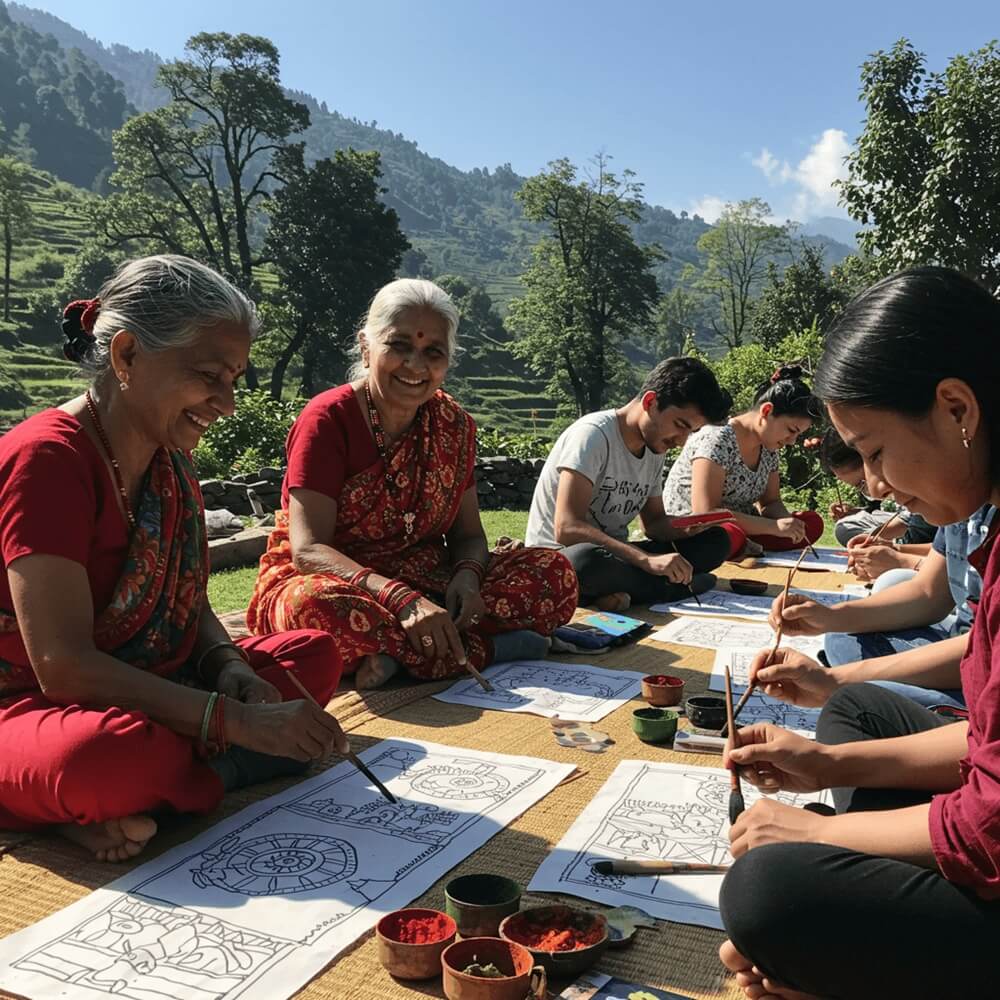
- Workshops in Kumaon: Towns like Almora and Nainital host Aipan workshops where local women teach techniques and share cultural stories.
- Festive Visits: The best way to experience Aipan art in Kumaon is by visiting villages during Diwali or weddings, when every house glows with red and white patterns.
- Online Learning: Platforms now offer tutorials and digital guides for beginners interested in Aipan art patterns.
- Local Markets: Handcrafted Aipan souvenirs—wall frames, coasters, notebooks—are available in Uttarakhand’s handicraft shops, supporting local artisans.
Whether as a visitor or a DIY enthusiast, engaging with Aipan is not just about learning an art—it’s about experiencing the cultural soul of Kumaon.
Conclusion
Aipan Art Uttarakhand is more than just decoration; it’s a living cultural tradition that embodies spirituality, community, and creativity. From its origins in Kumaon households to its modern-day adaptations in fashion and décor, traditional Aipan art continues to inspire.
For art lovers, cultural tourists, or anyone drawn to heritage crafts, exploring Aipan art designs offers a glimpse into Uttarakhand’s timeless spirit. In 2025, whether you choose to learn how to make Aipan art yourself or simply admire its beauty in Kumaon homes, you’ll be connecting with one of the most cherished forms of Uttarakhand folk art.
✨ Ready to explore? Try drawing your first Aipan pattern today—or plan a trip to Kumaon to see this living art form flourish in its true cultural setting.

